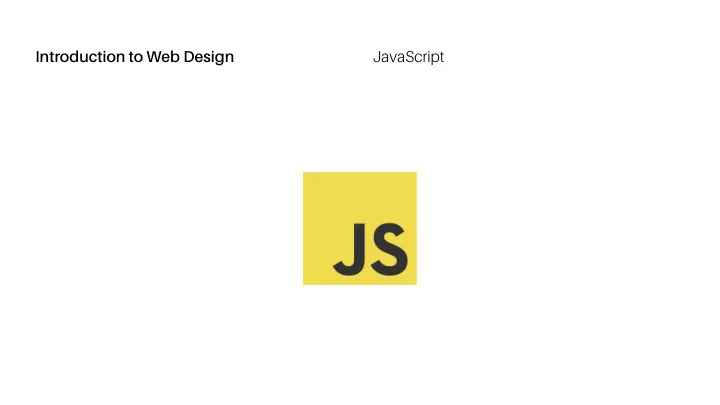

Introduction to Web Design JavaScript
Introduction to Web Design JavaScript You can think of a web page as consisting of three layers: JavaScript structure, presentation, and behavior. • HTML is the structure layer. • CSS is the presentation layer. • JavaScript is the behavior layer. JavaScript is a programming language for creating interactivity and functionality in web browsers.
Introduction to Web Design JavaScript JavaScript was was invented by Brendan Eich and introduced Background by Netscape in 1995. At that time, the Java language was ascendant and the name “JavaScript” was an attempt to ride this popularity. Eventually, browsers other than Netscape began to support JavaScript functionality, calling it “ECMAScript.” Today, JavaScript is not only a lingua franca of the web but a basis for many other computational media projects.
Introduction to Web Design JavaScript
Introduction to Web Design JavaScript As with CSS, JavaScript targets HTML elements to do Application something with them. There are three ways you can apply JavaScript to HTML. • Inline JavaScript • Embedded JavaScript • External JavaScript External and embedded JavaScript are preferable for their separation of content and behavior.
Introduction to Web Design JavaScript Like HTML and CSS, JavaScript is usually rendered in the web Front-End Language browser. Because it’s rendered in the browser rather than on a server, JavaScript is considered a “front-end” language. A browser’s “JavaScript engine” interprets and executes JavaScript code in the browser. There are different JavaScript engines for different browsers.
Introduction to Web Design JavaScript Computationally speaking, there isn’t much JavaScript can’t Capability do; it’s a robust programming language. Core functionality includes modifying HTML and CSS, communicating with the server, and storing data. We will use JavaScript to modify page content and style. As with any technology, it’s good to consider when to use it and when it’s unnecessary.
Recommend
More recommend